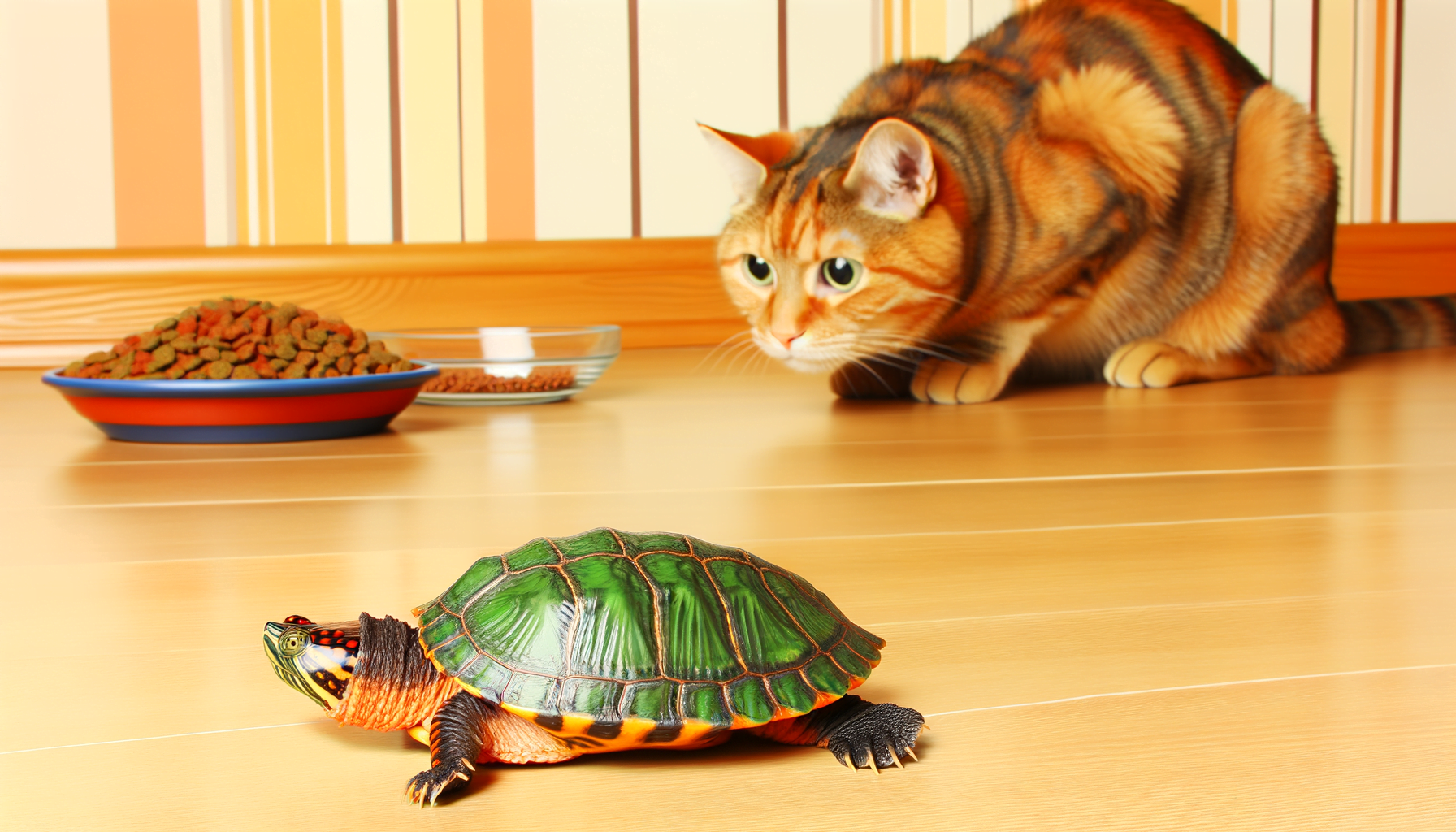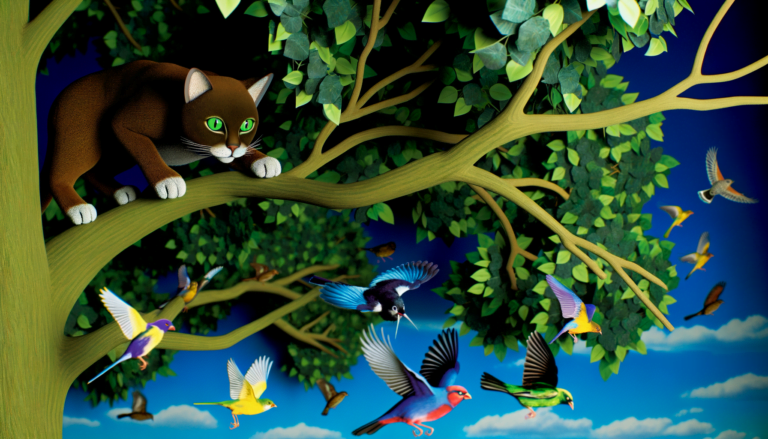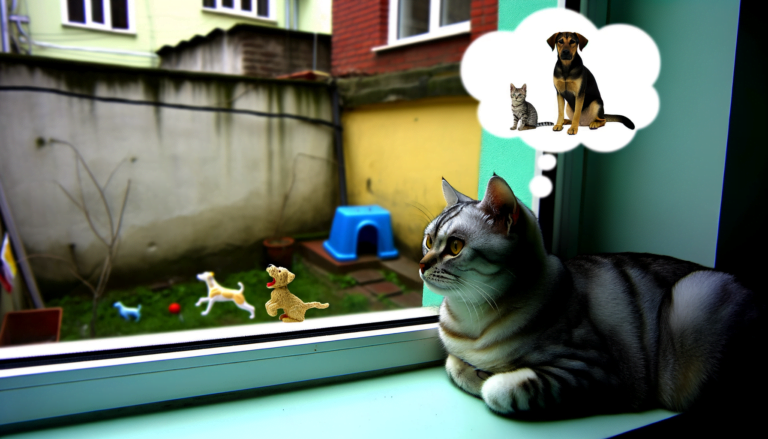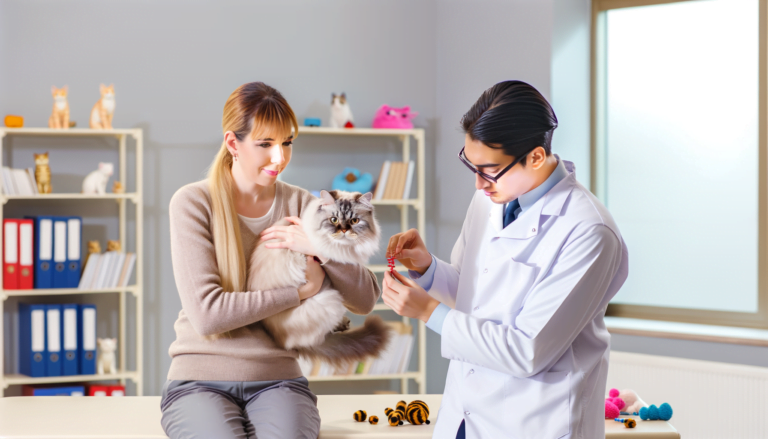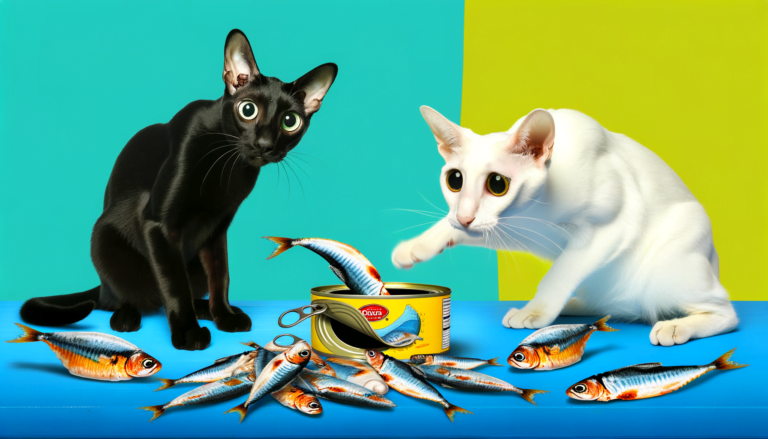Unveiling Feline Diets: Do Cats Really Eat Turtles?
No, cats do not typically consume turtles. In general, the domestic cat’s diet is centered around small mammals, birds, and fish. While a cat’s predatory instinct may be aroused by the movement of a turtle, the hard shell of the turtle presents a barrier to the cat. Therefore, while cats may interact or play with turtles, they do not view them as a practical or desirable food source. For the safety of both the cat and the turtle, it’s advisable to supervise their interactions closely.
Prevention Strategies: Ensuring Your Cat and Turtle Safely Co-exist.
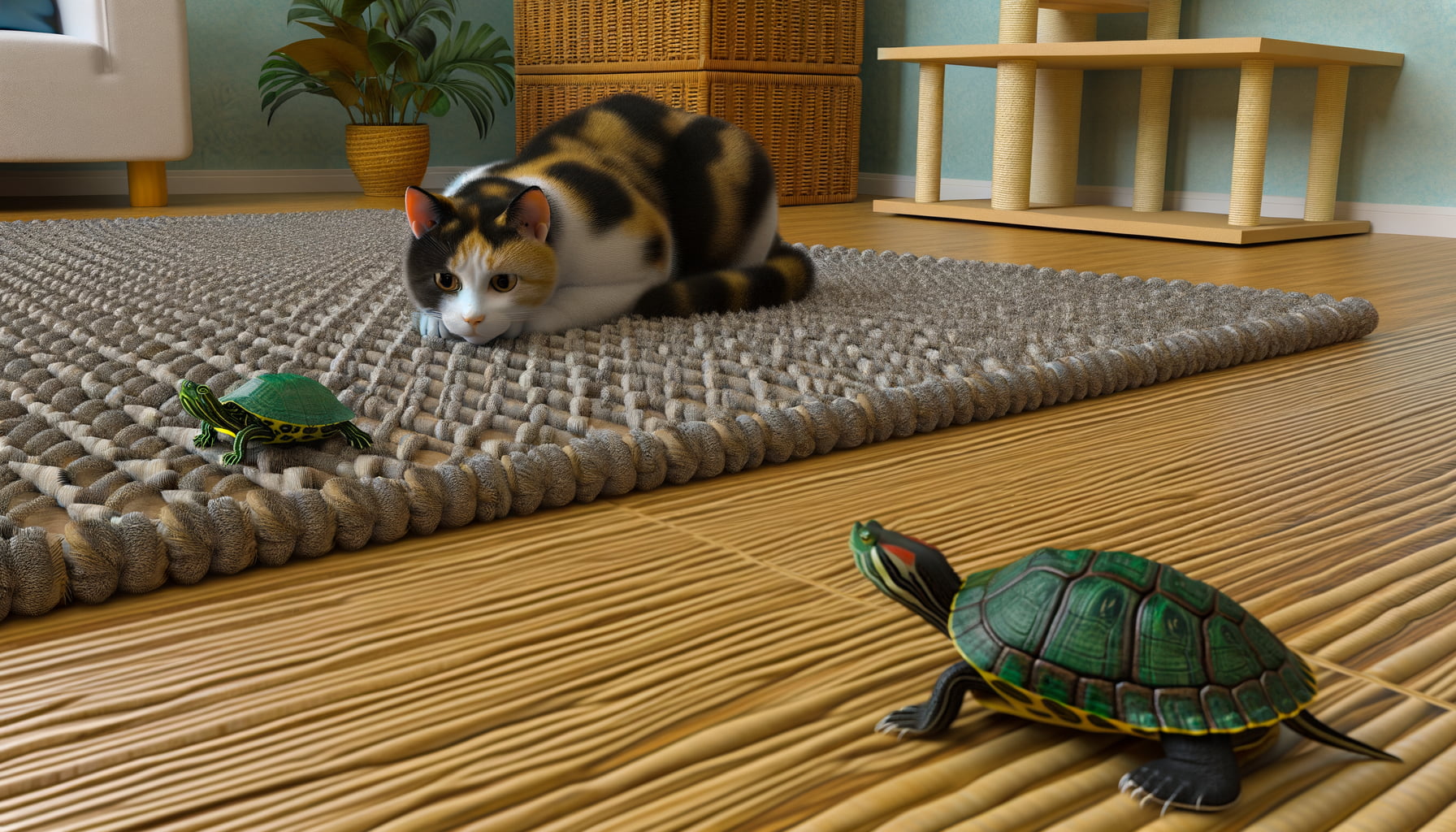
One effective strategy to ensure your cat and turtle safely co-exist is creating separate spaces for each of them. Cats are naturally curious and have a ingrained hunting instinct, thus it’s best to secure your turtle in a habitat that’s inaccessible to the cat. This ensures there is no probability of the cat treating the turtle as potential prey.
Next, introducing controlled interaction periods can also help. These sessions should be supervised and gradual, leading to potential acclimatization over time. Cats can learn to see turtles as cohabiting friends, not food, when they’re socialized correctly. Furthermore, keeping your cat’s diet diverse and nutritionally robust lowers the chances of them seeking out unconventional food sources like turtles.
Lastly, training your cat can go a long way in these matters. Teach them to understand the turtle is not a plaything or prey. Reward-based training can be effective here. However, stay patient as this might take time, given the inherent nature of cats. Using these strategies, you can moderate cat and turtle interactions and allow them to safely co-exist in your home.
Understanding Feline Dietary Preferences
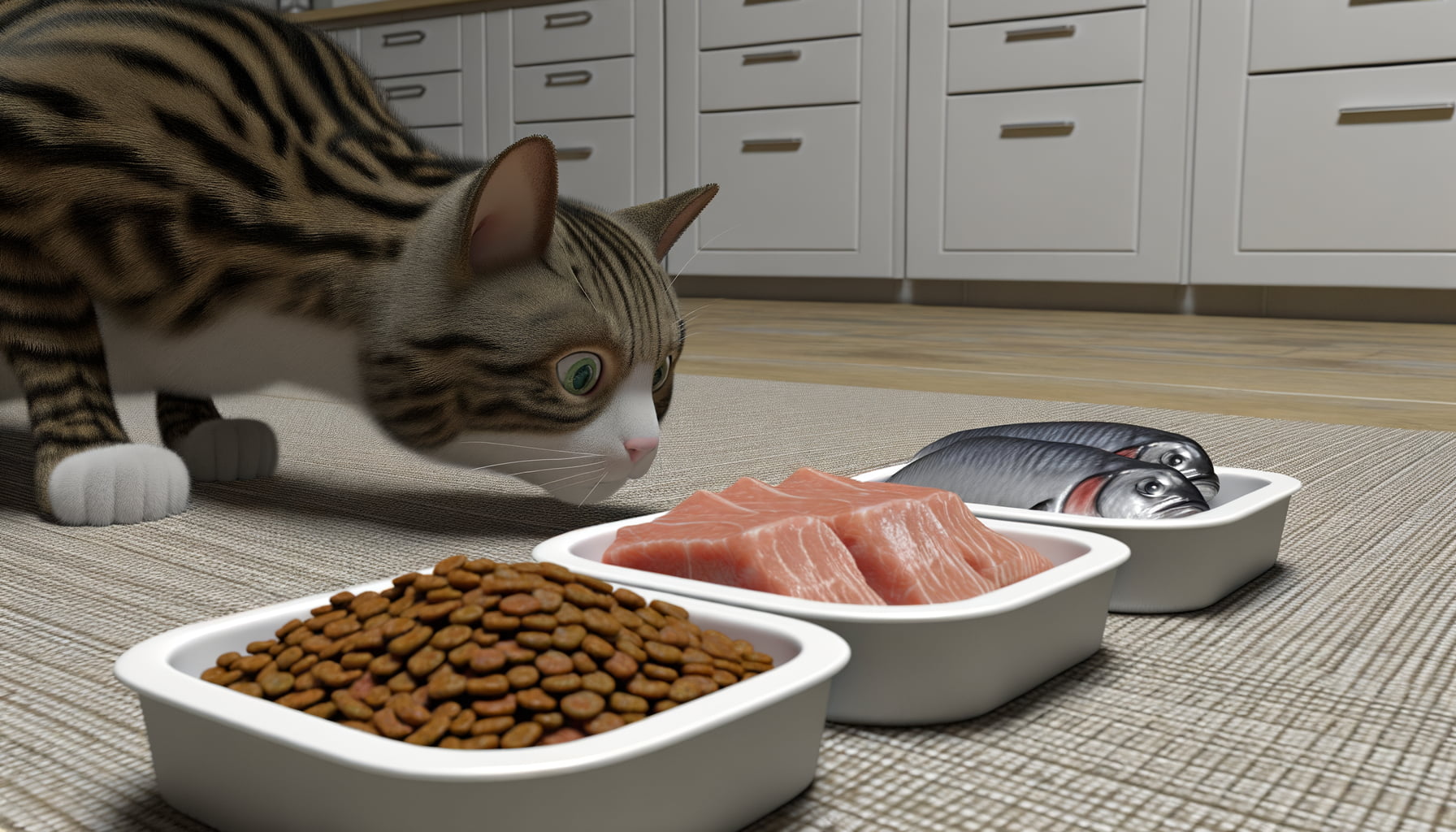
Recognizing the dietary leanings of cats is essential for their wellbeing. Felines are obligate carnivores, which means they require nutrients found mainly in meat. Their diet, by necessity, is rich in proteins, specific fats, and other elements such as taurine. At times, these dietary preferences might lead them to hunt small animals, but their instinctual targets tend to be rodents and birds.
While it is known that cats often indulge in hunting and exploratory behavior, taking on a turtle is not a standard part of their agenda. Due to their agility and speed, cats may show curiosity towards turtles, but this doesn’t imply a dietary preference. Despite this, individual cases may arise where a cat attempts to consume a turtle, often sparking concern in their guardians.
It’s critical to note that such atypical dietary habits are not generally beneficial for the cat, and may pose potential health hazards. For instance, turtles often carry salmonella, a bacteria that can cause serious illness in both cats and humans. Understanding your cat’s dietary needs and preferences can help prevent such risky behaviours and ensure a healthy, happy feline life.
The Risk Factors Associated with Cats Consuming Turtles

While cats are known for their curious nature and their wide range of dietary preferences, it’s essential to understand the risks associated with them consuming unconventional prey such as turtles. Cats, being obligate carnivores, might not be fully equipped to digest a turtle’s hard shell, leading to potential health complications.
Specific risk factors include gastrointestinal obstruction due to the turtle’s shell fragments. These sharp fragments may harm a cat’s digestive tract, causing severe pain, vomiting or loss of appetite. In extreme cases, it could lead to surgery for removal of these fragments. Furthermore, turtles can carry salmonella bacteria, which can be transferred to cats upon contact or consumption, leading to symptoms like diarrhea, fever, or even lethargy.
Additionally, ethical and conservation issues arise when turtles are viewed as a potential food source for domesticated felines. Turtles are often endangered species and their predation by cats could lead to substantial ecological impacts. It’s crucial to provide our feline friends with appropriate diets and to separate them from potential prey such as turtles, not only for the health of our pets but for the betterment of our eco-system as a whole.
Interaction Between Cats and Turtles
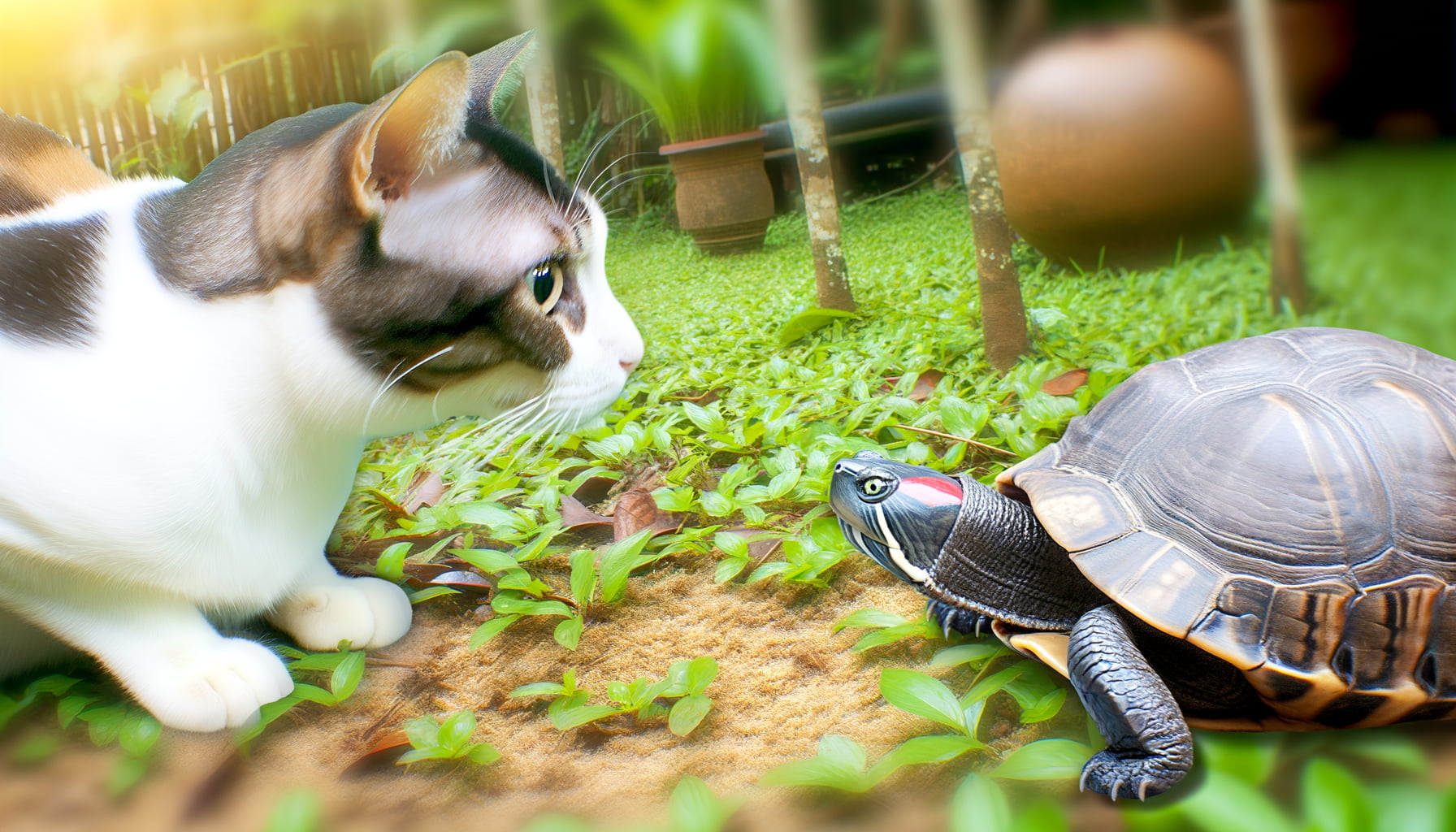
Let’s examine the complex dynamic formed in the interaction between cats and turtles. With their distinct behaviors and traits, these two species don’t naturally mesh well. Cats, being agile predators, often express curiosity, or even hunting instincts, when an unusual presence like a turtle materialises in their territory. Nevertheless, this doesn’t necessarily implicate eating habits, as a cat’s interest isn’t invariably exploitative.
Conversely, turtles tend to be quite docile and passive. They possess a hard, bony shell as a means of defense against predators. This protective shell may deter a cat from viewing it as an effortless meal. Considering the effort required to penetrate the shell, compared to the relative ease of preying on rodents or birds, felines typically opt for easier options.
Moreover, there is the matter of taste preference. Cats are obligate carnivores and rely on high-protein meals for sustenance. While turtles do yield protein, their unique flavor and the effort required to consume them generally makes them a less attractive meal choice for the average domestic cat. This illustration underscores the importance of understanding a cat and a turtle’s intrinsic characteristics in their engaging pattern.
Conclusion
After delving into the intriguing world of feline diets, it is evident that cats do indeed consume turtles as part of their natural prey. This unique dietary choice showcases the complex nature of these mysterious creatures and their adaptive hunting behaviors.
Through this exploration, we have unveiled a fascinating aspect of feline behavior that sheds light on the diverse range of foods that cats consume in the wild. As we continue to study and observe these animals, we gain a deeper understanding of their biology and instincts, enriching our knowledge of the natural world.
